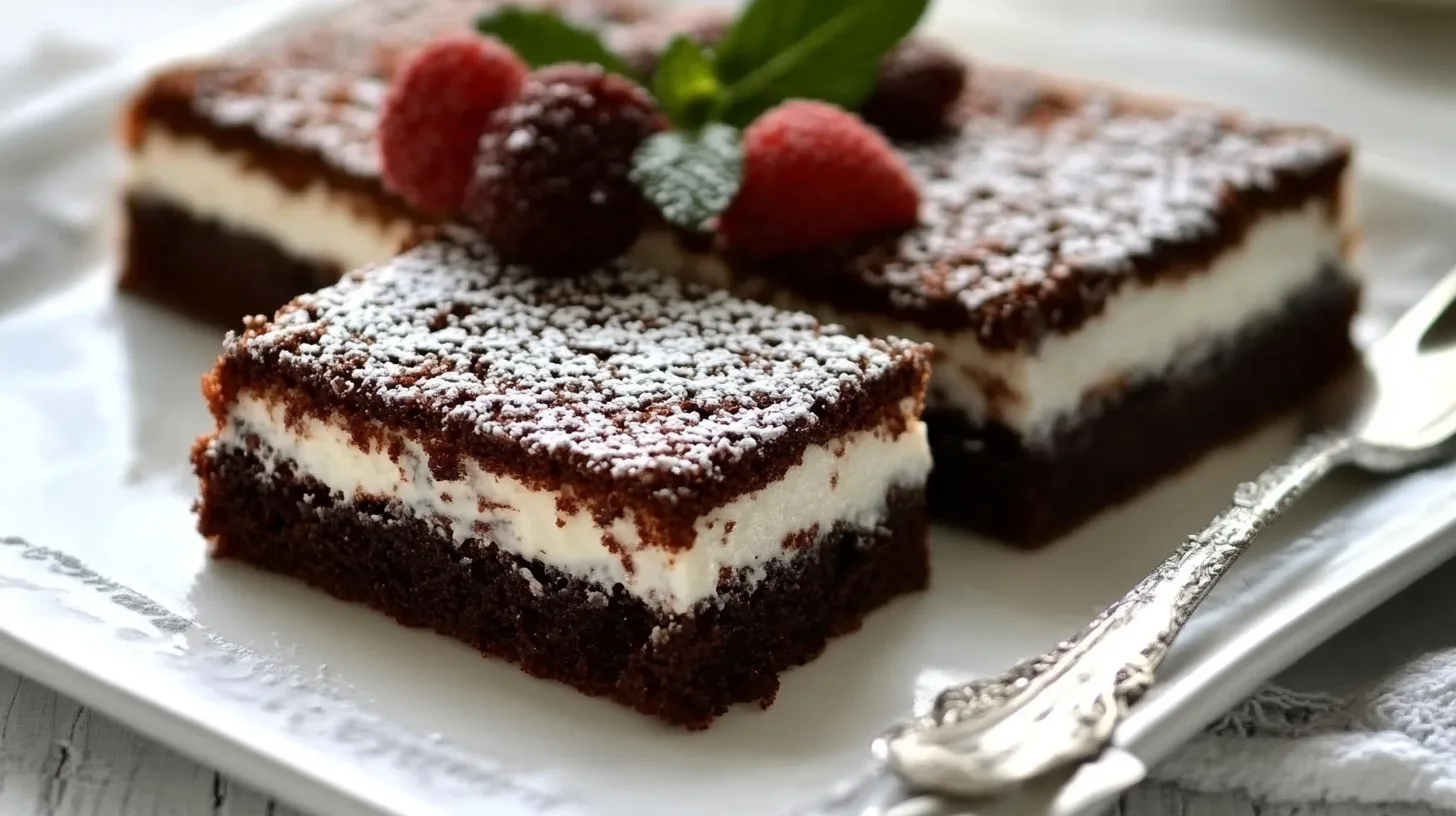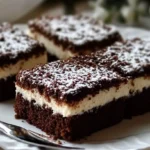If you’re looking for a moist, tender, and easy-to-make dessert, this kefir sheet cake recipe is the perfect choice. Baking with kefir not only enhances the cake’s texture but also adds a subtle tangy flavor that balances the sweetness beautifully. This fermented dairy product works wonders in baking, making your cake extra soft and fluffy while keeping it light.

Whether you’re a seasoned baker or just starting, this recipe is simple to follow and requires basic pantry ingredients. Plus, it’s incredibly versatile—you can enjoy it plain, dusted with powdered sugar, or topped with your favorite glaze. Ready to bake the ultimate kefir sheet cake? Let’s dive in!
Why Bake with kefir sheet cake recipe? (The Secret Ingredient for a Moist Cake)
If you’ve never baked with kefir before, you’re in for a treat. This fermented dairy product is a game-changer when it comes to baking soft, fluffy, and moist cakes. While kefir is commonly enjoyed as a probiotic-rich drink, it also plays a crucial role in enhancing the texture and flavor of baked goods. But what makes kefir sheet cake so special? Let’s explore why kefir is the secret ingredient you need in your baking.
1. What Is Kefir and How Does It Enhance Baking?
Kefir is a fermented milk drink similar to buttermilk or yogurt but with a thinner consistency and a tangier taste. It is made by fermenting milk with kefir grains, which contain a mix of beneficial bacteria and yeast. This fermentation process produces lactic acid, which helps tenderize gluten in baked goods, resulting in a softer and lighter texture.
When used in baking, kefir reacts with baking soda, creating tiny air pockets that make cakes rise beautifully. This is why kefir-based cakes often turn out fluffier and more tender than those made with regular milk.
2. Health Benefits of Using Kefir in Desserts
Aside from improving texture, kefir also adds a nutritional boost to your sheet cake. Here are some key health benefits:
- Probiotic Powerhouse: Kefir is rich in probiotics, which support gut health and digestion.
- High in Protein & Calcium: It provides essential nutrients for strong bones and muscles.
- Lower in Lactose: The fermentation process breaks down much of the lactose, making it easier to digest for those with lactose sensitivity.
- Boosts Immunity: With its beneficial bacteria and vitamins, kefir helps strengthen the immune system.
By swapping regular milk or buttermilk with kefir, you’re not just making a delicious kefir sheet cake—you’re also making a healthier dessert option.
3. Kefir vs. Buttermilk: What’s the Difference?
Kefir and buttermilk are often used interchangeably in recipes, but they have distinct differences:
| Feature | Kefir | Buttermilk |
|---|---|---|
| Texture | Thin, slightly fizzy | Thicker, more creamy |
| Flavor | Tangy with a slight sourness | Mildly tangy but less intense |
| Probiotics | High probiotic content | Few to no probiotics |
| Fermentation | Fermented with live cultures (yeast & bacteria) | Made from cultured milk |
While both ingredients help tenderize cakes and enhance moisture, kefir adds more complexity to the flavor and provides additional health benefits due to its probiotic content. If you don’t have kefir on hand, buttermilk can be used as a substitute, but you might miss out on some of the unique depth of flavor that kefir brings.
4. How Kefir Keeps Cakes Moist and Fluffy
One of the biggest advantages of baking with kefir is its ability to retain moisture in cakes. Here’s how:
- Acidic Nature: Kefir’s acidity helps break down gluten strands, resulting in a more tender crumb.
- Fat Content: The natural fats in kefir contribute to a rich and moist texture without making the cake too heavy.
- Enhances Leavening: When combined with baking soda, kefir produces carbon dioxide bubbles, helping the cake rise and stay airy.
This means that even after a few days, your kefir sheet cake will remain soft, moist, and delicious, unlike some cakes that tend to dry out quickly.
Step-by-Step Instructions for Making kefir sheet cake recipe
Now that you have all your ingredients ready, it’s time to start baking. Follow this step-by-step guide to create a soft, moist, and delicious kefir sheet cake. Whether you are a beginner or an experienced baker, these detailed instructions will help you achieve the best results.
1. Preparing Your Equipment and Ingredients
Preheat the Oven
Set your oven to 350°F (175°C) and allow it to preheat while you prepare the batter. Preheating ensures even baking and helps the cake rise properly.
Prepare the Baking Pan
Use a 9×13-inch sheet cake pan or a similar-sized baking dish. Grease the pan with butter or non-stick spray, then lightly dust it with flour to prevent sticking. Alternatively, line the pan with parchment paper for easy removal after baking.
Measure and Prep Ingredients
- Room Temperature Ingredients: Take out the eggs, butter, and kefir about 30 minutes before baking to bring them to room temperature. This helps them mix evenly into the batter.
- Sift the Dry Ingredients: Combine flour, baking soda, baking powder, and salt in a bowl. Sifting helps remove lumps and ensures even mixing.
2. Mixing the Batter
Step 1: Cream the Butter and Sugar
In a large mixing bowl, use an electric mixer or a whisk to beat butter and sugar together until the mixture becomes light and fluffy, about 2 to 3 minutes. This step incorporates air into the batter, resulting in a light and tender cake.
Step 2: Add the Eggs One by One
Crack in one egg at a time, beating well after each addition. This ensures the eggs are fully incorporated, keeping the batter smooth and well-emulsified.
Step 3: Mix in the Vanilla Extract and Kefir
Stir in vanilla extract to enhance the flavor. Gradually pour in the kefir, mixing at a low speed to prevent curdling. The batter may look slightly separated at this stage, but that is normal—kefir’s acidity will help create a tender crumb.
Step 4: Incorporate the Dry Ingredients
Slowly add the flour mixture to the wet ingredients, mixing just until combined. Overmixing can develop too much gluten, making the cake dense instead of soft and fluffy.
Optional Step: Add Mix-Ins
If desired, gently fold in chocolate chips, nuts, berries, or dried fruits at this stage to add extra flavor and texture.
3. Baking the Cake
Step 5: Pour and Spread the Batter
Transfer the batter into the prepared sheet cake pan, spreading it evenly with a spatula. Tap the pan gently on the counter to remove any large air bubbles.
Step 6: Bake the Cake
Place the cake in the preheated oven and bake for 30 to 35 minutes. The cake is done when:
- A toothpick inserted in the center comes out clean.
- The top is golden brown and springs back slightly when pressed.
Step 7: Cool the Cake
Let the cake cool in the pan for 10 to 15 minutes, then transfer it to a wire rack to cool completely. Allowing it to cool before adding frosting prevents it from melting.
4. Frosting and Topping Ideas
A kefir sheet cake is delicious on its own, but adding a frosting or glaze enhances its flavor. Here are some great options:
Simple Vanilla Glaze
Mix one cup of powdered sugar, two tablespoons of milk, and half a teaspoon of vanilla extract until smooth. Drizzle over the cooled cake for a light, sweet finish.
Cream Cheese Frosting
Beat together eight ounces of cream cheese, half a cup of butter, two cups of powdered sugar, and one teaspoon of vanilla extract. Spread evenly over the cake for a rich and creamy topping.
Chocolate Ganache
Heat half a cup of heavy cream, then pour it over one cup of chopped dark chocolate. Stir until smooth and spread over the cake for a decadent finish.
Fresh Fruit and Nuts
Top with berries, sliced almonds, or toasted coconut flakes for a natural and crunchy texture.
5. Storing and Serving Tips
- At Room Temperature: Store the cake in an airtight container for up to three days.
- Refrigeration: If frosted, keep it in the refrigerator for up to five days.
- Freezing: Wrap slices in plastic wrap and freeze for up to three months. Thaw overnight before serving.
- Serving Ideas: This cake pairs well with tea, coffee, or a glass of milk.
kefir sheet cake recipe
Ingredients
For the Cake:
- 2 ½ cups all-purpose flour
- 1 cup granulated sugar
- 1 teaspoon baking soda
- 1 teaspoon baking powder
- ½ teaspoon salt
- 1 teaspoon vanilla extract
- 2 large eggs
- 1 cup plain kefir
- ½ cup unsalted butter melted
- ¼ cup vegetable oil
Optional Add-ins:
- 1 teaspoon lemon or orange zest for extra flavor
- ½ teaspoon cinnamon for a warm spice note
- ½ cup chocolate chips nuts, or dried fruits
- For the Glaze Optional:
- 1 cup powdered sugar
- 2 tablespoons milk or kefir
- ½ teaspoon vanilla extract
Instructions
- Preheat the oven to 350°F (175°C). Grease a 9×13-inch baking pan and set it aside.
- Prepare the dry ingredients: In a large mixing bowl, whisk together the flour, sugar, baking soda, baking powder, and salt.
- Mix the wet ingredients: In another bowl, whisk the eggs, kefir, melted butter, vegetable oil, and vanilla extract until smooth.
- Combine wet and dry ingredients: Gradually add the wet ingredients into the dry ingredients, stirring gently until just combined. Do not overmix.
- Fold in any optional add-ins (such as zest, cinnamon, or chocolate chips) if using.
- Bake the cake: Pour the batter into the prepared pan and spread it evenly. Bake for 25-30 minutes, or until a toothpick inserted in the center comes out clean.
- Cool the cake: Allow the cake to cool in the pan for about 10 minutes, then transfer it to a wire rack to cool completely.
- Prepare the glaze (optional): In a small bowl, whisk together powdered sugar, milk (or kefir), and vanilla extract. Drizzle over the cooled cake.
- Serve and enjoy: Slice the cake into squares and serve. Store leftovers in an airtight container at room temperature for up to 3 days or refrigerate for longer freshness.
Toppings and Variations to Customize the kefir sheet cake recipe
One of the best things about a kefir sheet cake is its versatility. While it’s delicious on its own, adding toppings and experimenting with variations can take it to the next level. Whether you prefer something light and simple or rich and indulgent, here are some creative ideas to customize your cake.
1. Classic Toppings for Extra Flavor
If you want to enhance your kefir sheet cake without overpowering its natural flavor, try these classic toppings:
Powdered Sugar Dusting
A simple dusting of powdered sugar adds a subtle sweetness and a beautiful finish. Just sift a light layer over the cooled cake before serving.
Vanilla or Lemon Glaze
For a touch of extra moisture and sweetness, drizzle a quick glaze over the cake. Here’s how to make it:
- Vanilla Glaze: Mix one cup of powdered sugar, two tablespoons of milk, and half a teaspoon of vanilla extract until smooth.
- Lemon Glaze: Replace the milk with lemon juice for a tangy, refreshing twist.
Cream Cheese Frosting
A rich and creamy cream cheese frosting pairs perfectly with the cake’s slight tanginess. To make it:
- Beat eight ounces of cream cheese, half a cup of butter, two cups of powdered sugar, and one teaspoon of vanilla extract until smooth.
- Spread over the cooled cake and enjoy.
Chocolate Ganache
If you love a decadent finish, a chocolate ganache is the way to go:
- Heat half a cup of heavy cream until warm but not boiling.
- Pour over one cup of chopped dark chocolate and stir until smooth.
- Spread over the cake for a glossy, chocolatey topping.
2. Fruity and Nutty Variations of kefir sheet cake recipe
Adding fruits or nuts can bring extra texture and natural sweetness to your cake. Here are some ideas:
Fresh Fruit Toppings
- Berries (strawberries, blueberries, raspberries) add a refreshing, slightly tart contrast to the sweet cake.
- Sliced bananas or peaches complement the cake’s soft texture and mild tanginess.
- Chopped pineapple or mango brings a tropical twist.
Nutty Crunch
- Toasted almonds, walnuts, or pecans add a crunchy contrast to the soft cake.
- Crushed pistachios give an elegant look and a slightly sweet, nutty flavor.
- Coconut flakes provide a subtle chewiness and a hint of tropical flavor.
3. Chocolate and Caramel Drizzles
For an indulgent treat, try drizzling your cake with a rich sauce:
Chocolate Drizzle
- Melt half a cup of chocolate chips with one tablespoon of butter and two tablespoons of milk.
- Stir until smooth, then drizzle over the cake.
Caramel Sauce
- Heat one cup of sugar with two tablespoons of water until golden brown.
- Stir in half a cup of heavy cream and two tablespoons of butter for a silky, caramelized topping.
4. Flavorful Mix-Ins for the Batter
If you want to take your kefir sheet cake to another level before baking, try these mix-in ideas:
Spices and Extracts
- Add cinnamon, nutmeg, or cardamom for a warm, cozy flavor.
- A touch of almond or coconut extract can enhance the taste.
Chocolate or White Chocolate Chips
- Fold half a cup of chocolate chips into the batter for bursts of sweetness.
- Try white chocolate chips for a creamy contrast.
Zest for a Citrus Kick
- Add lemon or orange zest to brighten up the cake’s flavor.
- This pairs well with a lemon glaze or cream cheese frosting.
5. Healthier Alternatives
If you want a lighter version of this cake, try these substitutions:
Greek Yogurt Instead of Butter
- Swap half of the butter for Greek yogurt to reduce fat while maintaining moisture.
Whole Wheat Flour
- Use a blend of whole wheat flour and all-purpose flour for added fiber.
Honey or Maple Syrup Instead of Sugar
- Replace refined sugar with honey or maple syrup for a natural sweetness.
Conclusion
Baking a kefir sheet cake is a rewarding experience that combines simplicity, nutrition, and incredible flavor. This cake’s moist, tender texture is made possible by the unique properties of kefir, which not only enhance the cake’s softness but also provide a slight tang that balances the sweetness. Whether you are an experienced baker or a beginner in the kitchen, this easy-to-follow recipe ensures a delightful homemade treat every time.
One of the standout features of this cake is its versatility. You can enjoy it plain for a classic, comforting dessert or customize it with toppings like cream cheese frosting, chocolate ganache, fresh fruits, or a light dusting of powdered sugar. With the many variations available, this recipe can be tailored to suit different preferences, making it perfect for any occasion.
Beyond its taste and texture, this cake is also a healthier choice compared to traditional cakes. Thanks to kefir’s probiotic benefits, natural acidity, and ability to replace heavy ingredients like sour cream or buttermilk, this recipe provides a nourishing twist on a classic sheet cake. It’s an excellent way to enjoy a delicious homemade dessert while incorporating gut-friendly ingredients into your diet.
If you’re looking for a foolproof cake recipe that’s moist, flavorful, and easy to make, this kefir sheet cake is a must-try. Whether you’re baking for family, friends, or simply indulging in a sweet treat for yourself, this cake is bound to impress. So, gather your ingredients, preheat your oven, and enjoy the process of creating a dessert that’s as wholesome as it is delicious. Visite this recipe if you looking for greet dinner garlic butter chicken bites


